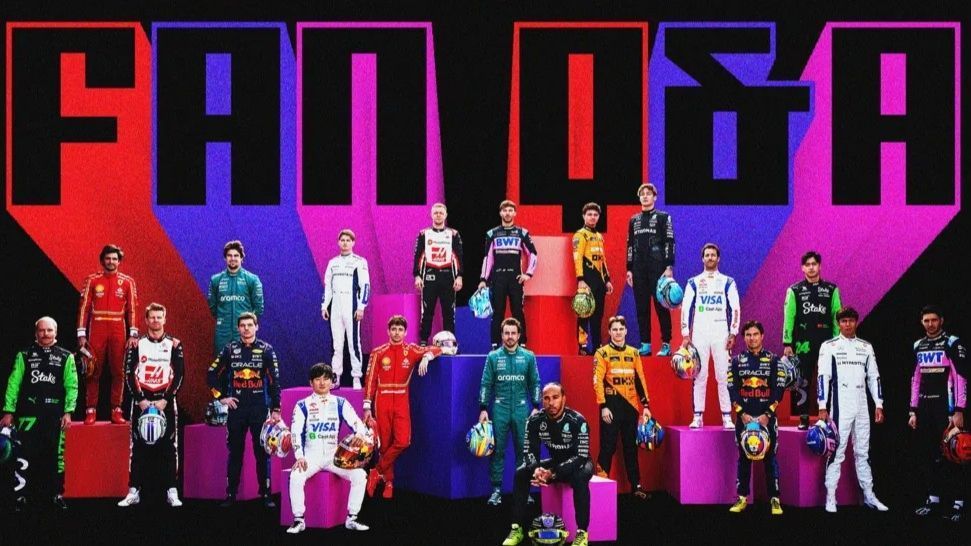
Formula 1 is taking its summer break, but our correspondent Andrew Benson is still answering your questions…
Read on for Andrew’s answers about simulators, a beginners’ guide to track types, stop-go penalties and much more.
How does the simulator work? If a team has a bad practice day, we often hear that they spend hours overnight trying to solve their problems – Robin
So-called driver-in-the-loop simulators are an important part of the research and development programmes of Formula 1 teams.
These are akin to highly complex computer games. The driver sits in a race seat in front of a giant screen. Often it is on hydraulic ramps to give the sensation of movement – pitch and roll and so on.
The team choose a race circuit, and programme in various set-ups to see how the car will react. Drivers can spend eight hours a day in simulators quite regularly, even if not all of them enjoy it very much.
The software is incredibly sophisticated and has proved a useful tool for optimising car set-ups for particular tracks.
So, yes, often after Friday practice a reserve or simulator driver will be in the simulator and the engineers will programme in various options to try to solve whatever balance issues the race drivers were having on track.
It is often very effective at improving the cars for qualifying and race.
The same process happens before a race meeting – often with the race drivers themselves – to give the teams a head-start for a weekend.
Please could you give a beginners’ guide to track types suiting different cars and explain why? – Geraint
All racing cars have specific characteristics, strengths and weaknesses. And how these match up compared to those of rival cars in certain types of corners are part of what defines competitiveness on a given track.
So one car might be stronger than another in slow corners, or fast. One car might be able to ride kerbs better than another.
Perhaps its performance at a given ride height might be better compared to another car than at another ride height.
Or one car might work less well when the weather is hot, but better when it’s cool. That could be to do with tyre temperatures, or how the cooling levels affect the aerodynamics.
It is rare that this makes a massive difference to competitiveness, but occasionally it does, and that has been seen this year.
So, for example, the Red Bull needs to be run very stiff for its aerodynamics to work at their optimum. And it loses more pace relative to the Ferrari, particularly, but also the McLaren if they try to run it softer. At the same time, the Red Bull seems to require a low front ride height, whereas the Ferrari loses less if the front ride height is higher, perhaps because it has been optimised to run at a slightly higher position.
That explains why the Red Bull was so far off the pace in Monaco, where kerb riding requires softer suspension and a higher ride height. And they could well struggle at Singapore – as it did last year – for the same reasons.
Or take Mercedes. George Russell said in Hungary there seemed to be a trend emerging where they were more competitive in cool conditions – Canada, Silverstone – than in hot – Spain, Austria and Hungary.
The McLaren is strong in slow and medium-speed corners, but not as good as the Red Bull in corners taken at over 250km/h. So the balance of these at certain tracks – Hungary v Spa, for example – will define competitiveness levels.
Another example would be the DRS overtaking aid. The Red Bull DRS is much more effective than McLaren’s – it gains more top speed. So at circuits where there is a lot of DRS use, the Red Bull gains competitiveness, such as in Austria, where there were three DRS zones.
Many races are decided by who’s on the right tyre at the right time, better tyre management or pit stops. Why not do away with tyre changes? – John
F1 bosses believe pit stops are crucial to the show, and that races would risk being boring without them.
Given refuelling is banned for reasons of cost and safety, tyre changes are the only way to have pit stops.
In these days of cutting emissions, using less fuel and cutting costs, how can the FIA justify the addition of ‘sprint races’ to some races? – Dave
A sprint weekend actually reduces the amount of laps a driver would typically do over a grand prix weekend, compared with the traditional format of three practice sessions before qualifying.
So in terms of fuel usage and emissions, a sprint weekend would be more sustainable than a standard one.
And don’t forget that from 2026, F1 cars will use 100% sustainable fuel, and therefore their tailpipe emissions will be net-zero.
Why don’t they use drive-through and stop-and-go penalties any more? They would be more effective deterrents than a five or 10-second penalty. – Bob
Stop-and-go penalties remain in the FIA guidelines and stewards are able to hand them out.
However, they are some of the harshest penalties the stewards can impose and it’s simply that in recent cases it was not felt they needed to use such a severe sanction.
At the same time, the FIA says penalties have evolved since last year and are generally more severe in most cases.
So, for example, what might have been a standard five-second penalty last year in most cases has changed to 10 seconds because the FIA felt previously there was not enough of a deterrent.
